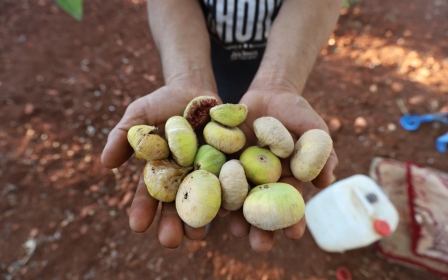
In pictures: Gaza’s strawberry harvest
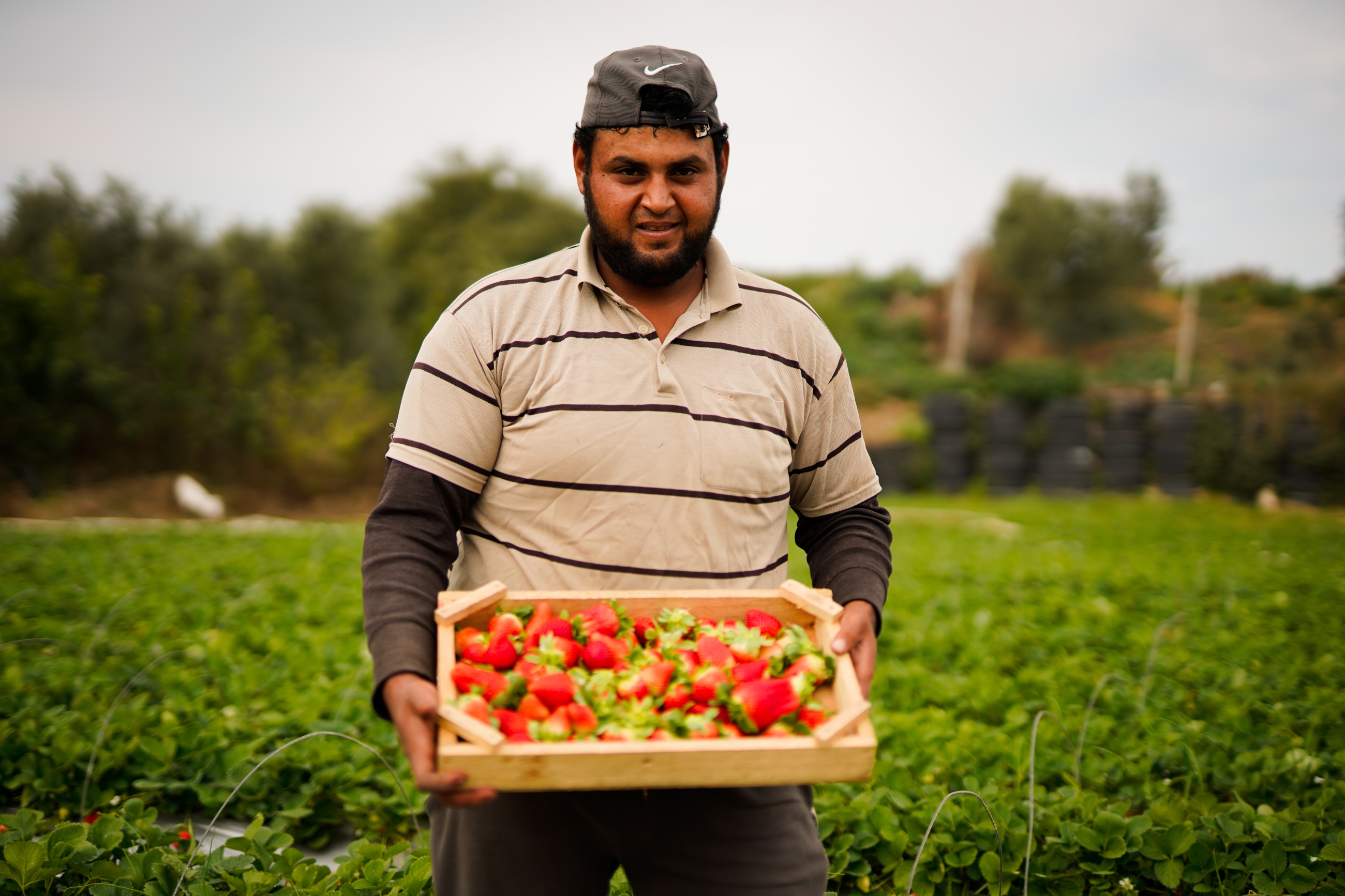
For Gaza’s strawberry farmers, harvesting season has become a source of pride. Every year, the strawberry harvesting season starts in November and lasts for a few months until the end of March, and many rely on it for their income. The start of the season is a time of immense joy for farmers because after planting the seeds in September, they patiently wait for months for the strawberries to grow to their full potential. The farmers come back to acres of fruiting plants, and juicy, vibrant strawberries. (All photos by Ahmed El Danaf)
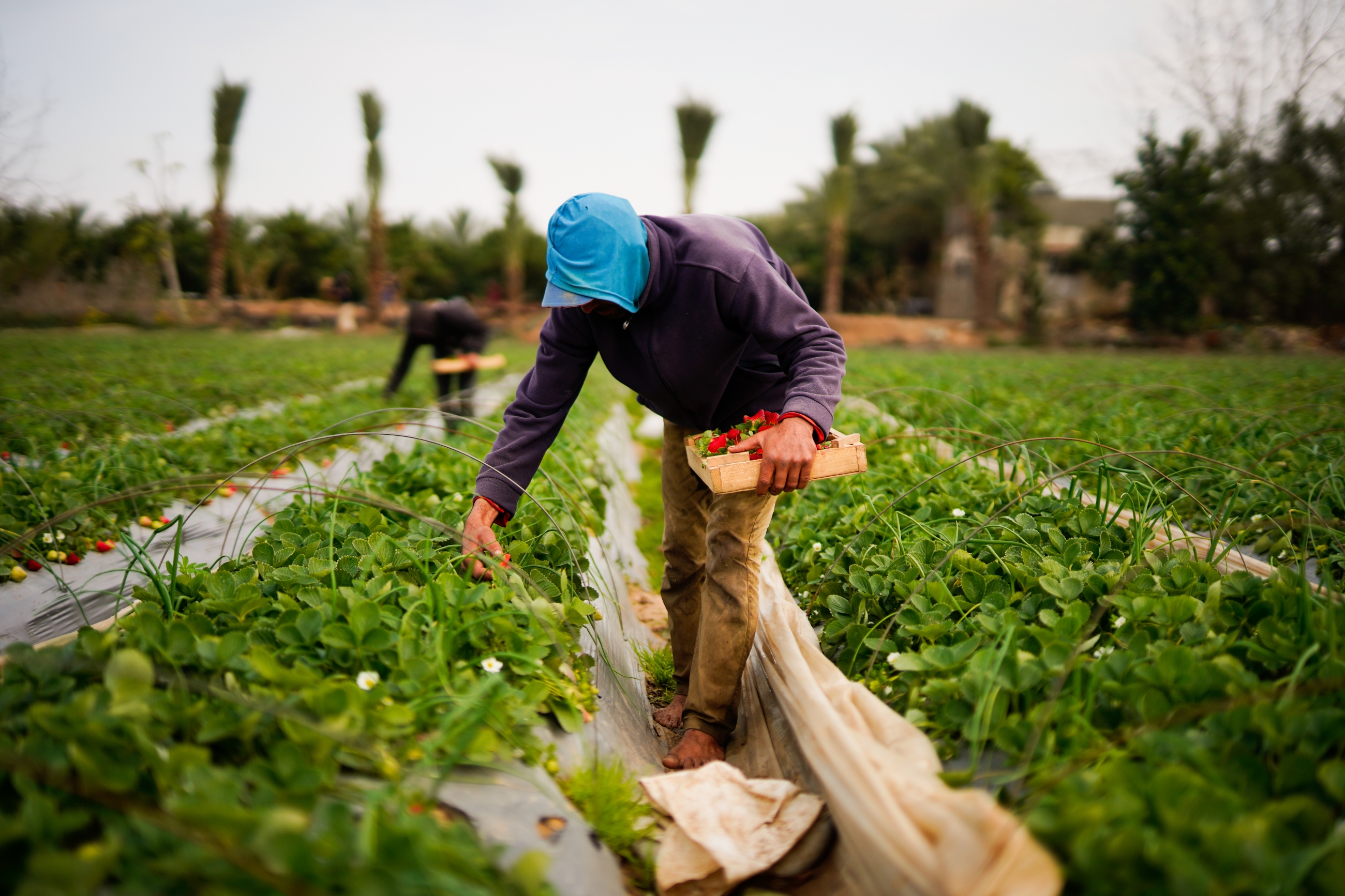
In Gaza, many refer to strawberries as ‘red gold’. Farming in the besieged Gaza Strip is not easy, particularly as workers are up against plenty of obstacles and challenges imposed by Israel. Gaza, which has been under an Israeli land, sea, and air blockade for over 15 years, faces numerous restrictions, which impact the daily lives of residents and labourers. One of the main restrictions that have been imposed by Israel is limits on some types of fertiliser that farmers use, as they are considered "dual usage items".
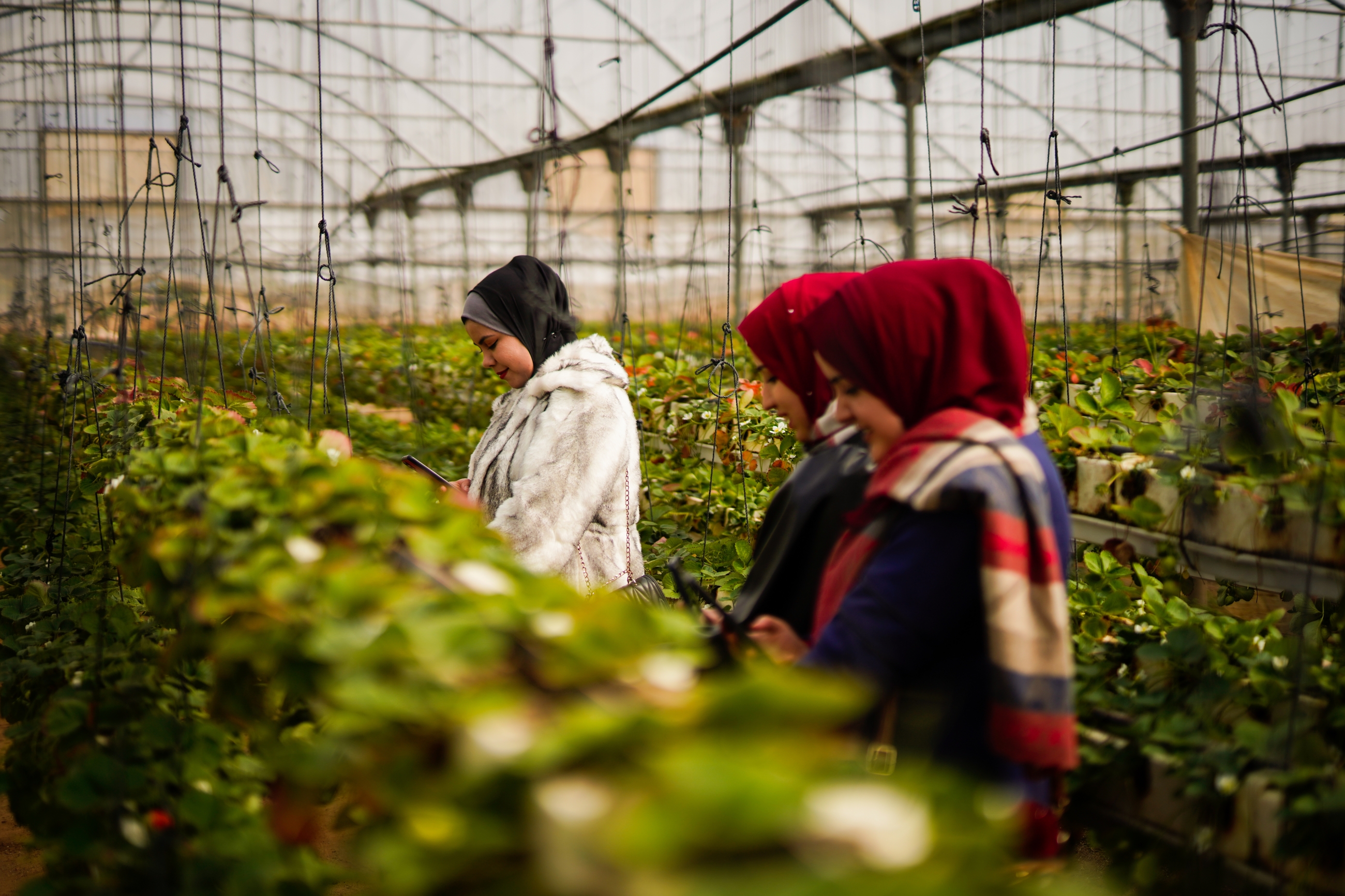
Growing strawberries takes a lot of resources and manpower, making it a highly-prized crop. In particular, strawberries require a large quantity of water, which can be a challenge given Israel’s restrictions on water for people in Gaza. As a result of the restrictions, Gaza has been facing a water pollution crisis for several years, which has been made worse because much farmland is close to contaminated seawater. According to the Geneva-based Euro-Med Human Rights Monitor, 97 percent of water in Gaza is contaminated. Many farmers are forced to pay large sums of money for irrigation, making the farming process more expensive. As a result, some farmers now grow crops that don’t need as much water as strawberries, such as green peppers.
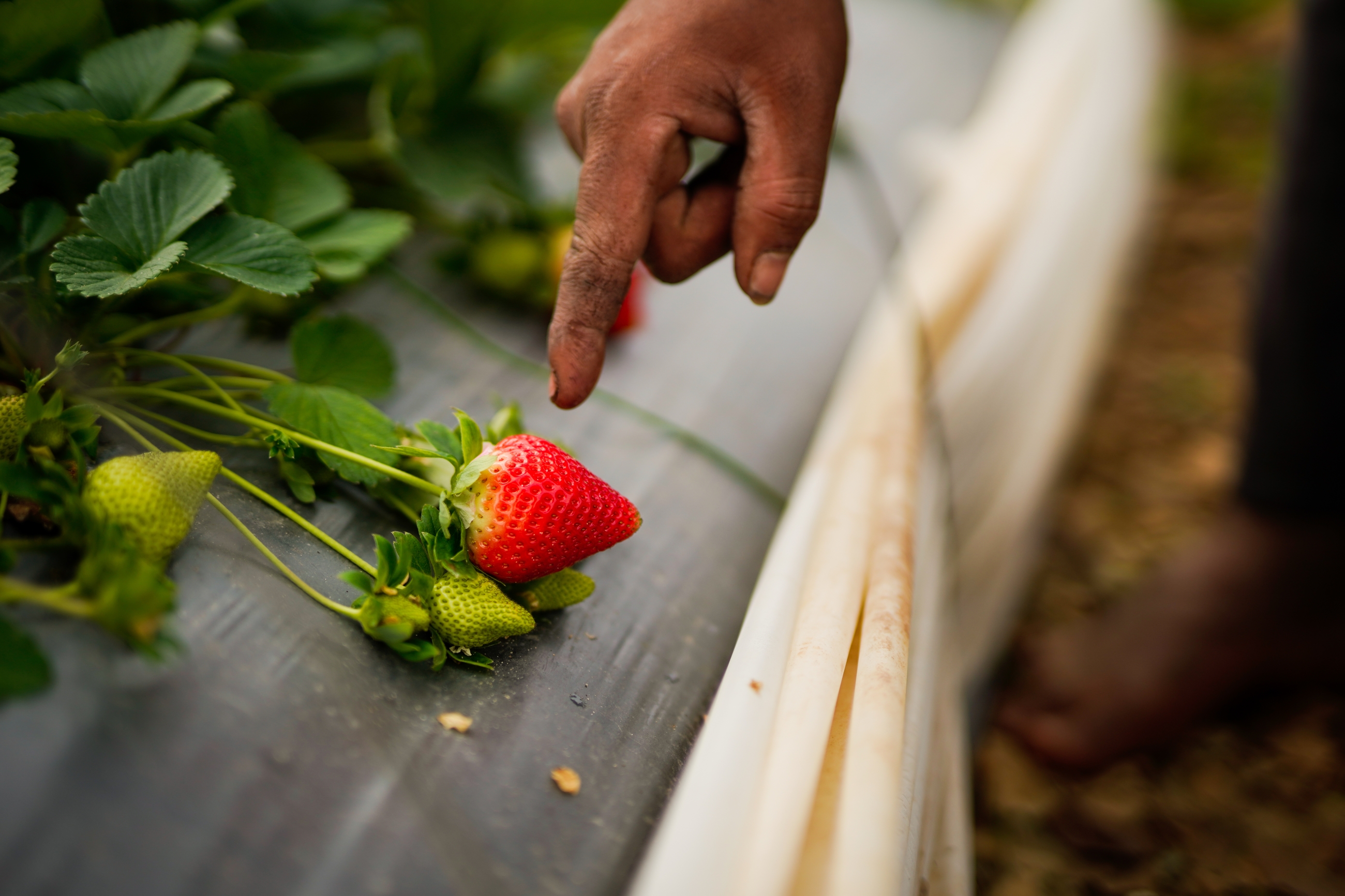
“I feel proud that Gaza can produce strawberries of this high quality despite all of the obstacles we face because of the blockade,” says Munier Hamdouna, a 66-year-old farmer who has been in the industry for over 40 years. Hamdouna says that farmers would once export the strawberries to countries around Europe because of their high quality. But now, because Israel restricts the flow of goods in and out of Gaza, farmers are only allowed to export their strawberries to the occupied West Bank and East Jerusalem. Israel has prevented farmers in Gaza from exporting strawberries to Europe for seven years, which farmers say has taken a huge toll on their livelihoods and caused significant financial losses.
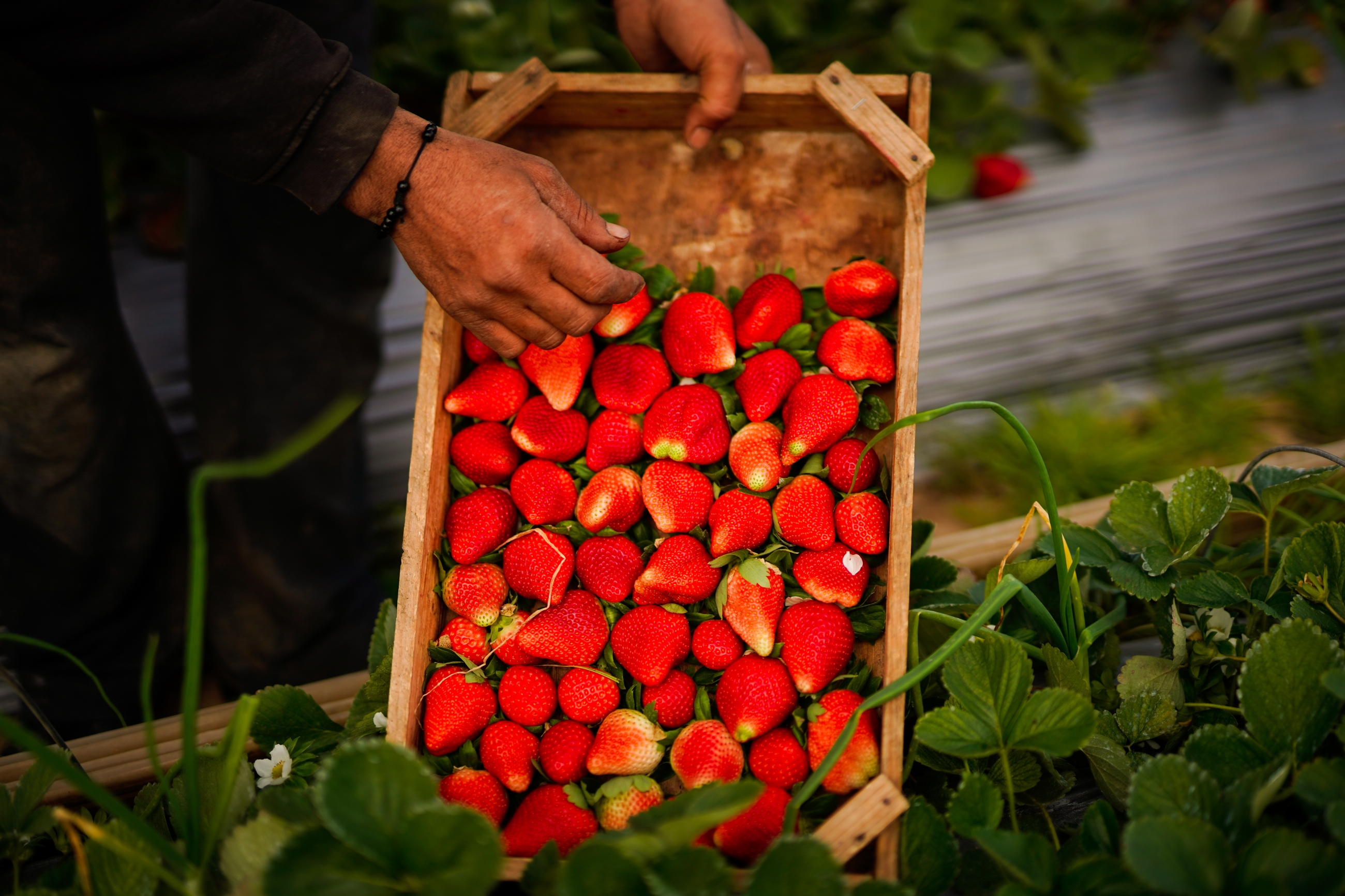
In the last few years, due to changes in the climate, strawberry picking has been peaking in January, whereas traditionally December was the busiest month.

One of the most fertile regions for strawberry farming is Beir Lahia, located in the north of Gaza.

Strawberry picking in Gaza provides part-time employment for hundreds of people, but it is hard work, with long hours and low pay. Mohamed Omar, a 23-year-old father of three has been working as a strawberry picker for six years. He starts work at 6 am and carries on until 3 pm for which he earns 40 Israeli Shekels ($11) a day.

Despite difficult economic conditions, many of Gaza’s strawberry farmers are proud of their achievements and ability to grow and sell high-quality produce. In years when they have a good harvest and there is a surplus of strawberries, people will buy large crates and use them to make jams or juice. For farmers in Gaza, the start of the harvest season is marked with celebrations, as it represents a new opportunity for earning an income and a sign that their hard work is paying off.
Middle East Eye delivers independent and unrivalled coverage and analysis of the Middle East, North Africa and beyond. To learn more about republishing this content and the associated fees, please fill out this form. More about MEE can be found here.



